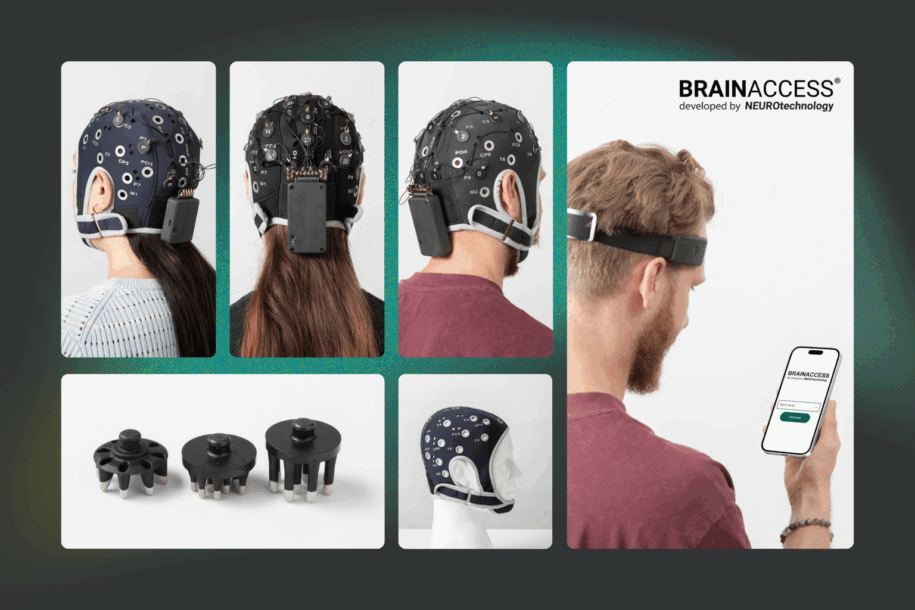We are excited to announce a new official release for BrainAccess, our complete EEG hardware-software ecosystem designed to make high-quality brain data collection accessible beyond the lab.
This release marks a major milestone in our mission to empower researchers, developers, and innovators with professional-grade EEG tools that are affordable, portable, and ready for real-world applications.
What’s new in this release – Overview
Hardware upgrades
- Redesigned EEG caps for improved comfort, stability, and long-session usability
- Integration of Datwyler SoftPulse™ soft electrodes for enhanced adaptability across hair types
Firmware upgrades
- Firmware upgrade for BrainAccess MINI and HALO -> now supporting up to 500 Hz sampling rate
Software upgrades
- Official Python API published on PyPI for easy installation and version control
- BrainAccess SDK 3.6.0 -> Fixed bugs
- BrainAccess Mobile App -> Improved in design and functionality
- Android SDK (Kotlin) -> New addition to our SDK! Enables mobile EEG and BCI app development
- BrainAccess Board -> Updated to 2.6.0 version, featuring improvements in Signal Viewer design and Impedance Mode
More convenient, more consistent EEG hardware
EEG Cap Redesign
Our latest hardware generation focuses on improving user comfort, data stability, and consistency across different users and recording conditions.
The redesigned EEG caps feature an ergonomic strap system that distributes pressure evenly and allows for fast adjustment to different head sizes. The new design ensures better electrode-to-skin contact, leading to more stable impedance values and higher signal quality, even during longer recording sessions.
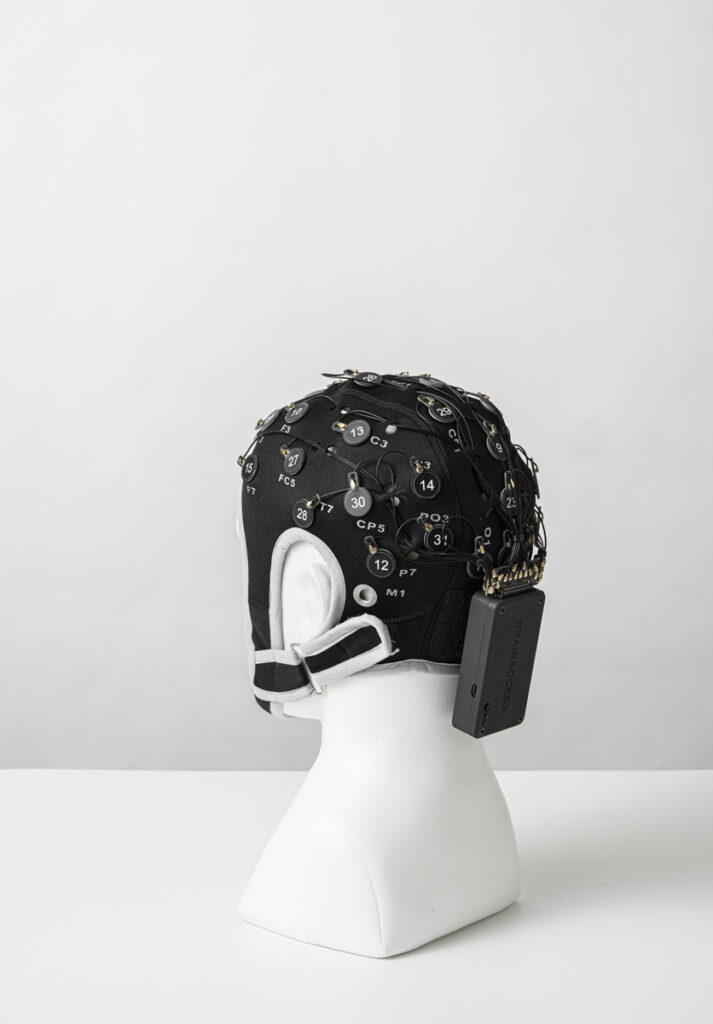
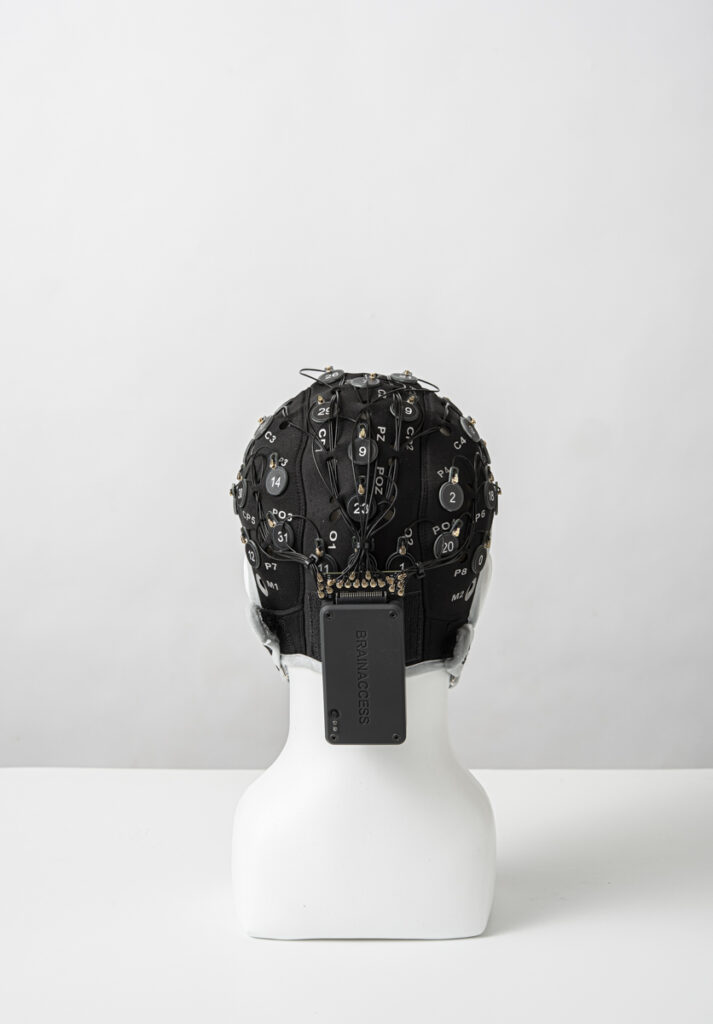
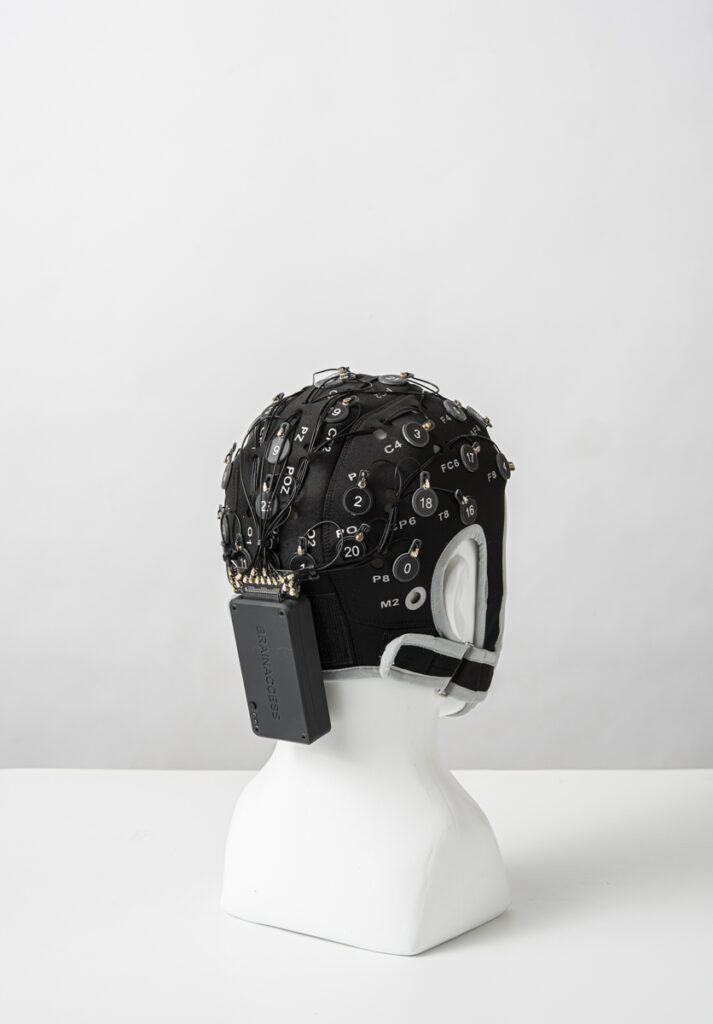
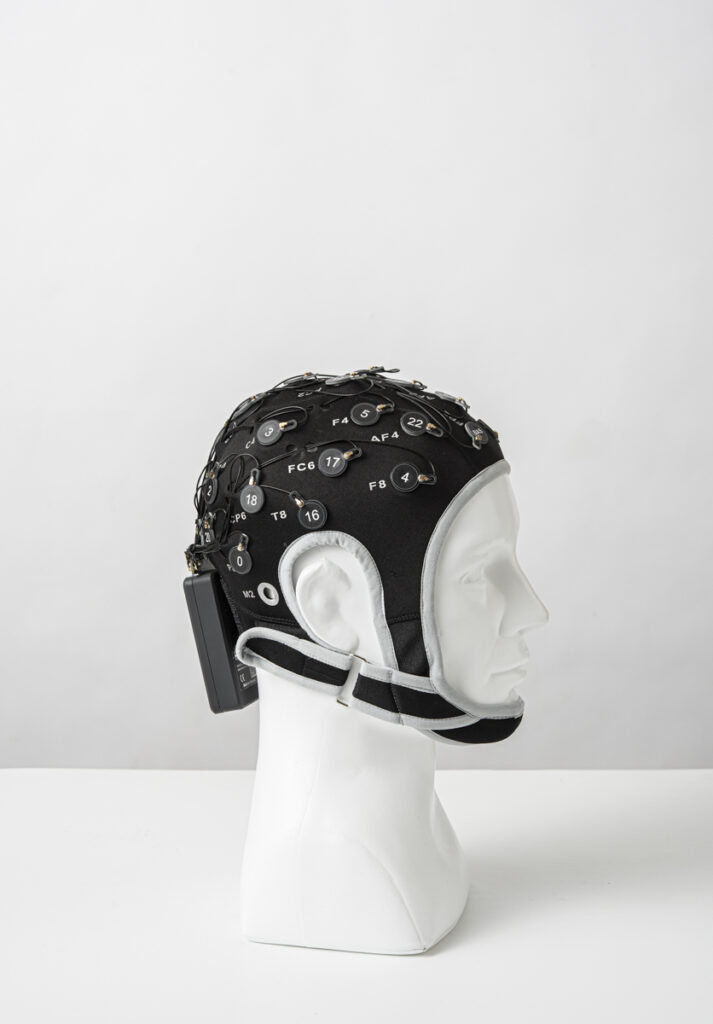
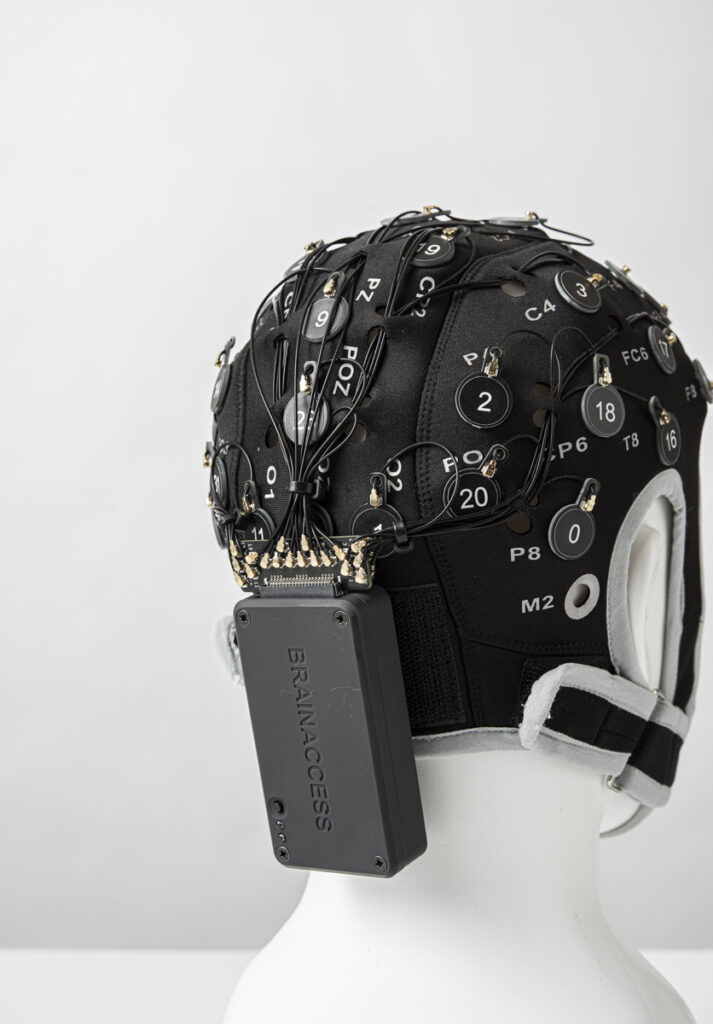
All caps remain fully compatible with the BrainAccess MINI, MIDI, and MAXI systems, ensuring a consistent setup across different channel configurations.
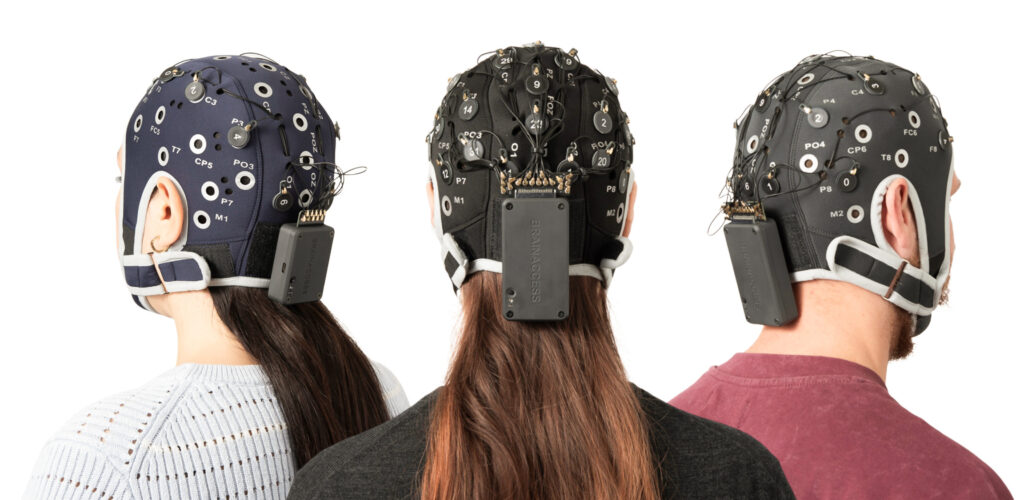
Advanced electrode technology for diverse use cases: Soft electrodes as add-ons
BrainAccess caps are now fully compatible with both our in-house gold-plated dry electrodes and the newly integrated Datwyler SoftPulse™ electrodes. As our gold-plated electrodes will continue to be included in the BrainAccess Kits, in addition clients will now be be able to include SoftPulse™ electrodes to their purchase.
Our gold-plated dry electrodes offer low noise, durability, and repeatability over long-term use. They are ideal for high-precision recordings and frequent experimental setups.
The addition of SoftPulse™ electrodes complements this by offering a softer contact interface, especially beneficial for studies involving sensitive participants or extended wear. The flexible polymer surface adapts to the scalp’s micro-geometry and accommodates diverse hair types, reducing setup time and enhancing comfort without compromising signal quality. SoftPulse™ have a shorter life compered to our in-house manufactured electrodes and can be used for approximately 100 times.
Together, these options provide users with a versatile and scalable platform, suitable for a wide range of research and development scenarios, from cognitive neuroscience to wearable neurotechnology prototyping. In other words, this hybrid approach allows researchers and developers to choose the optimal configuration for their specific use case: robust gold electrodes for precision studies, SoftPulse™ for comfort-focused applications such as neurofeedback or consumer research.
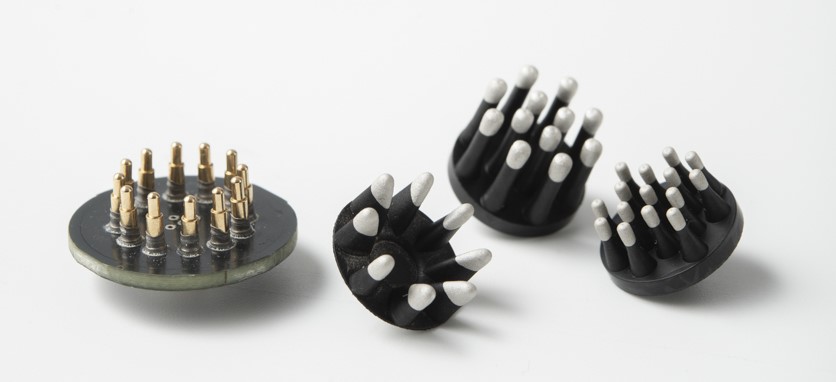
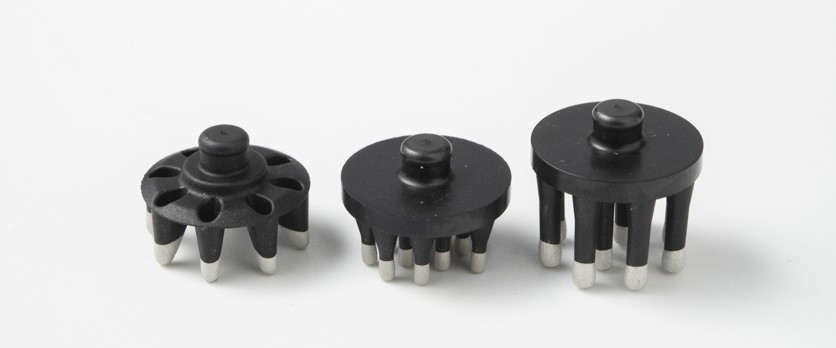
Software ecosystem: faster, smarter, and developer-ready
The software side of BrainAccess has evolved just as much as the hardware. Here’s a list of the updates available in this release, involving our firmware and free software suite.
1. Firmware upgrade – precision and flexibility
The latest firmware for BrainAccess MINI and HALO devices increases the maximum sampling rate to 500 Hz, allowing for high-resolution EEG data acquisition suitable for time-sensitive and frequency-domain analyses.
This enhancement benefits researchers working on detailed time-frequency analysis (TFR), event-related potentials (ERP), microstate analysis, and AI-based signal modeling and all those applications where high temporal resolution is key.
2. BrainAccess Python API – easier than ever to install
The BrainAccess Python API is now officially available on PyPI, making installation and version management faster and more convenient for developers and researchers. The API provides a complete interface for device control, real-time data streaming, preprocessing, impedance monitoring, and data export, enabling seamless integration into Python-based analysis pipelines.
Installation takes just a single command inside your Python environment:
pip install brainaccessThe release is accompanied by an updated developer documentation hub, which includes tutorials, API references, and example scripts to help you get started quickly.
Explore the documentation and start building with BrainAccess and Python today:
NEW: BrainAccess Python API Documentation.
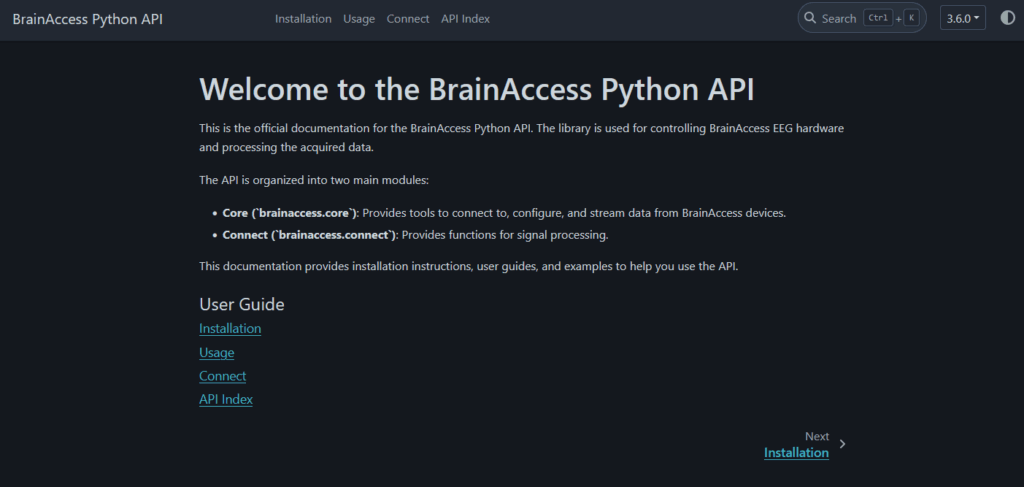
3. BrainAccess Mobile App and Kotlin SDKs – EEG power on the palm of your hand
Our BrainAccess Mobile App has been upgraded with improved functionality, stability, and device management features, making it easier to connect, stream, and monitor EEG signals directly on portable devices.
Alongside this update, we are introducing the new Android SDK, developed in Kotlin, designed specifically for seamless integration with modern mobile development environments.
The SDK enables developers to build custom EEG applications—from cognitive monitoring tools and neurofeedback training to real-time brain–computer interfaces (BCI)—that run natively on Android smartphones and tablets. With support for high-rate data streaming, event markers, and low-latency processing, it makes it possible to bring advanced neurotechnology beyond the lab and into field research, wearable setups, education, sports performance, and VR/AR environments.
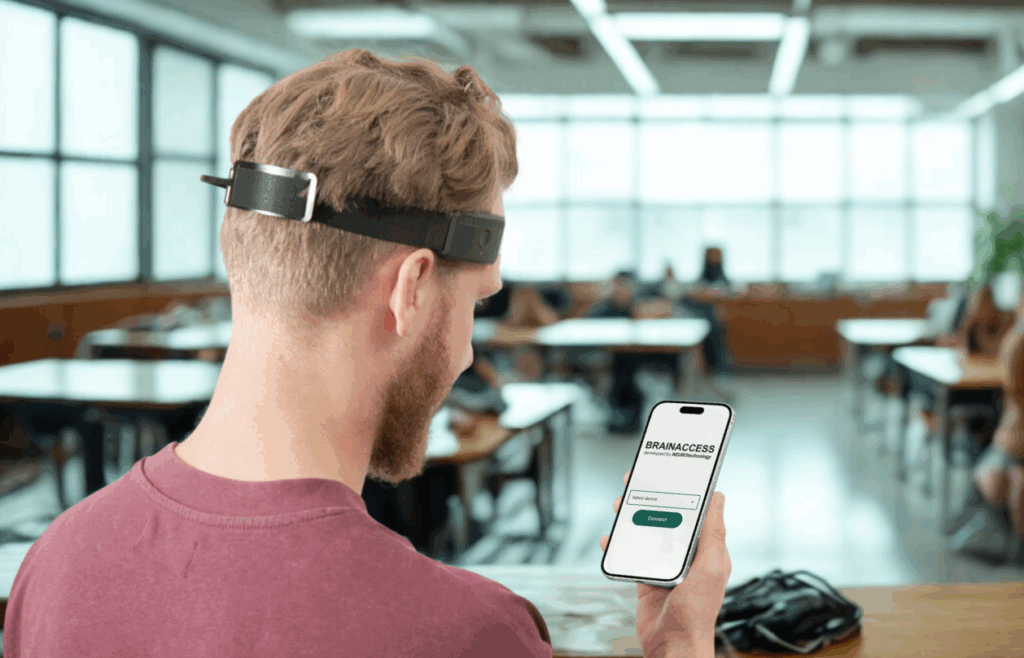
This release represents a significant step toward our vision of truly mobile, real-world EEG, enabling faster prototyping and more accessible neural interfacing tools for developers, researchers, and innovators worldwide.
4. BrainAccess Board – Improved Signal Visualization and Impedance Monitoring
The BrainAccess Board software, our core application for device control, data streaming, and signal visualization from Graphic interface (GUI), has been updated to version 2.6.0, bringing significant improvements in performance and usability. The new version introduces a smoother and more responsive interface, with a redesigned signal viewer that offers enhanced clarity and supports both Light and Dark themes, enabling users to adapt the visual environment to their workflow or ambient lighting conditions.
A new Impedance Mode has been added to provide more precise channel impedance measurement and visualization, allowing users to easily assess electrode contact quality and optimize setup before and during recordings.
Under the hood, the software has been optimized for speed and reduced resource consumption, resulting in a lighter, more efficient application.
The update also introduces automatic Bluetooth device scanning, making it easier than ever to connect to BrainAccess devices seamlessly.
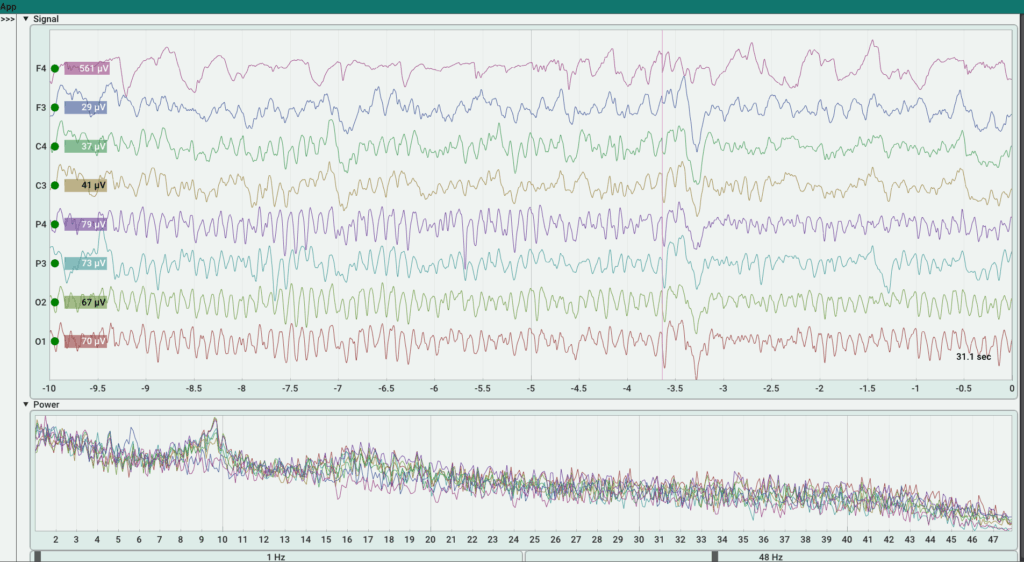
Ready for real-time BCI and AI research
BrainAccess is designed with real-time streaming performance, modularity, and developer accessibility at its core. The system enables seamless integration of EEG data into custom applications ranging from neurofeedback and mental-state tracking to adaptive user interfaces, closed-loop BCIs, and machine-learning-based cognitive decoding.
The ecosystem exposes low-level EEG data for precise control and signal modeling, while providing high-level abstractions that accelerate prototyping and experimentation. This dual-layer design allows users to move effortlessly from rapid testing to production-grade implementations without compromising data integrity or temporal precision.
Our products are designed for researchers and built for developers.
Whether you are conducting controlled laboratory experiments, creating new brain-computer interface paradigms, or embedding EEG-driven features into real-time interactive systems, BrainAccess delivers the hardware reliability, signal stability, and software openness required for modern neurotechnology development.
With modular SDKs in multiple programming languages, open APIs, and multi-device support, developers can integrate BrainAccess directly into Python, C, or Android environments, while researchers benefit from standardized cap layouts, consistent impedance monitoring, and streamlined workflows for high-quality EEG acquisition and analysis.
Get started
The new BrainAccess ecosystem is now available for order and download.
Explore the full product line, documentation, and SDKs at www.brainaccess.ai.
We can’t wait to see how you’ll use BrainAccess to push the boundaries of brain research and real-world neurotechnology.
Useful Links
BrainAccess Python API Documentation
BrainAccess C API Documentation

Written by Martina Berto, Research Engineer and Neuroscientist at BrainAccess

